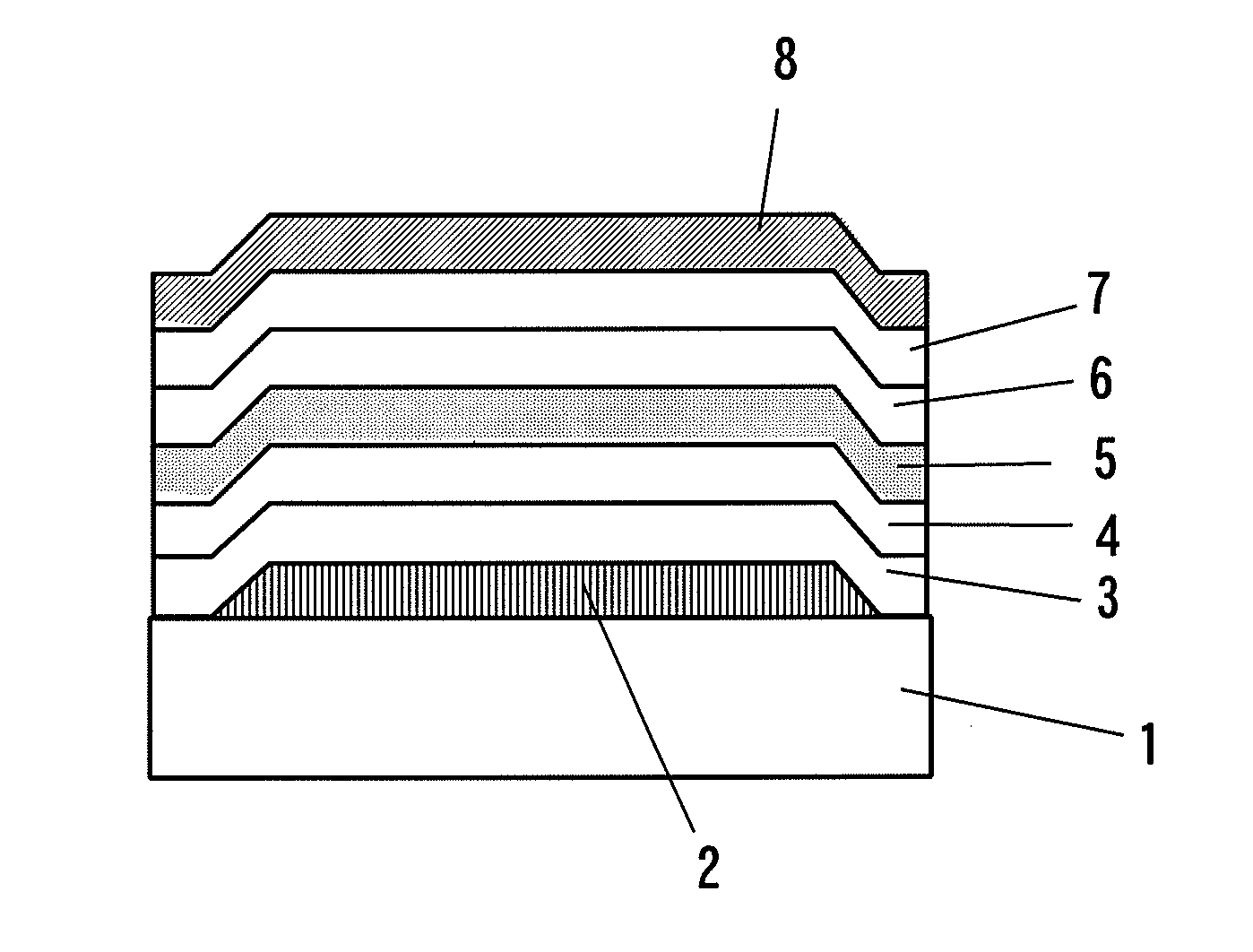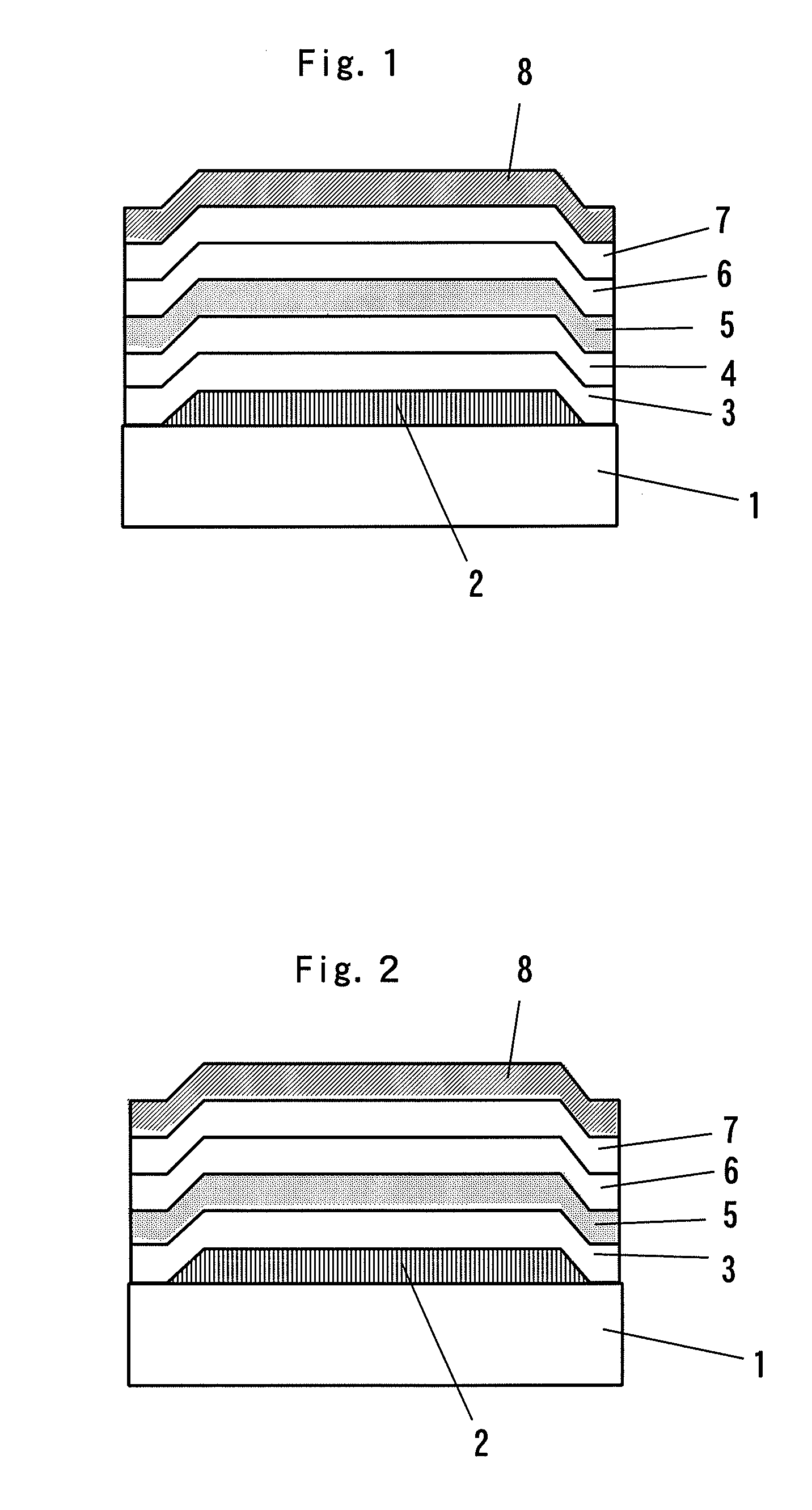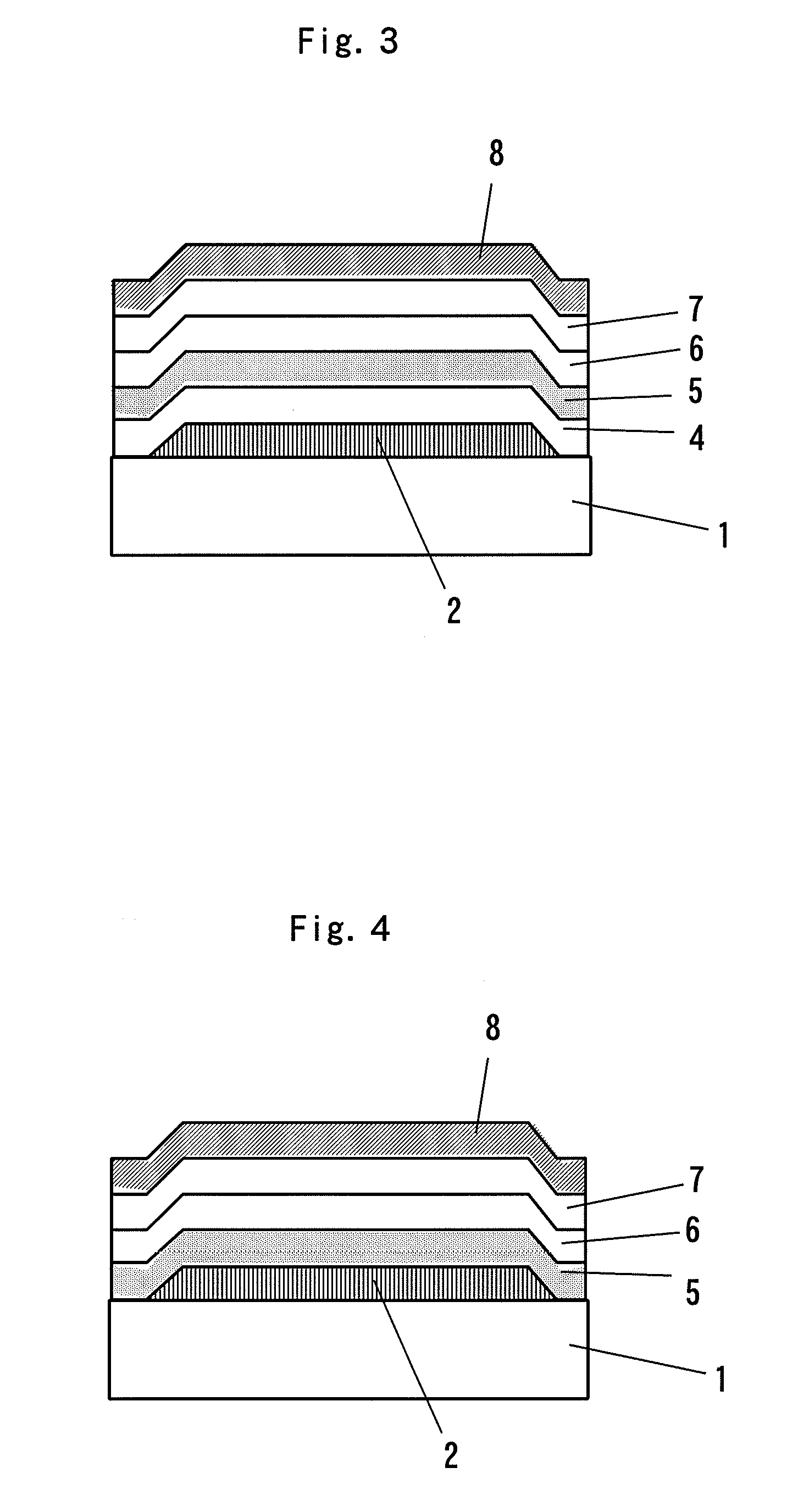Organic electroluminescence device
a technology of electroluminescence device and organic el, which is applied in the direction of thermoelectric device junction material, semiconductor device, electrical apparatus, etc., can solve the problems of reducing the yield of organic el products, the driving voltage of a phosphorescence organic el device with a high quantum efficiency of light emission, etc., and achieves high efficiency and high luminous
- Summary
- Abstract
- Description
- Claims
- Application Information
AI Technical Summary
Benefits of technology
Problems solved by technology
Method used
Image
Examples
example 1
Performance Evaluation of Devices Using a Bulky Organic Semiconductor Compound as an Electron Injection Layer
[0072]A plurality of organic EL devices were fabricated in a manner described bellow and then the life span properties thereof were measured and evaluated.
[0073]—Elementary Device 1-1 (Ref)
[0074]There was provided a glass substrate on which an anode of transparent electrode ITO was formed. Through a vacuum deposition method, in sequence, a hole injection layer of Copper Phthalocyanine (CuPc) with a thickness of 32 nm was formed on the anode, and then a hole transport layer of N,N′-bis(naphthalene-2-yl)-N,N′-diphenyl-benzidene (abbreviated as NPB) with a thickness of 38 nm was formed on the hole injection layer, and then a light-emitting layer functioning as an electron transport layer of Tris(8-hydroxyquinolinato)aluminum(III) (abbreviated as Alq3) with a thickness of 60 nm was formed on the hole transport layer, and then an electron injection layer Li2O (with a 10 nm thickne...
example 2
Performance Valuation of the Device Including, as a Hole Injection Layer, a Bulky Organic Semiconductor Compound Layer or an Inorganic Compound Layer Layered
[0090]A plurality of organic EL devices were fabricated in a manner described bellow and then the life span properties thereof were measured and evaluated, each of which includes a hole injection layer of inorganic compound layer (inorganic fluoride or inorganic oxide) and / or a bulky organic semiconductor compound layer (Compound 1 or Compound 4) layered.
[0091]Similarly to Example 1, the devices were based on Elementary device 1-1.
—The Device 2-2(Comparison Device 4)—
[0092]An organic EL device 2-2 was fabricated in the same manner as the Elementary device 1-1, except that a hole injection layer of MoO3 was formed with a thickness of 32 μm.
[0093]—The Device 2-3 (Corresponding to the Device 1-5: Example 1)—
[0094]An, organic EL device 2-3 was fabricated in the same manner as the Elementary device 1-1, except that a hole injection l...
example 3
Performance Valuation of the Device Including, as a Hole Injection Layer, a Mixture Layer of a Bulky Organic Semiconductor Compound and an Inorganic Compound
[0114]A plurality of organic EL devices were fabricated in a manner described bellow and then the life span properties thereof were measured and evaluated, each of which includes a hole injection layer in which an inorganic compound (inorganic fluoride, inorganic oxide) and a borazine compound (Compound 1) or benzene compound (Compound 4) are mixed.
[0115]Similarly to Example 1, the devices were based on Elementary device 1-1.
[0116]—The Device 3-2 (Corresponding to the Device 1-5: Example 1)—
[0117]An organic EL device 3-2 was fabricated in the same manner as the Elementary device 1-1, except that a hole injection layer of Compound 4 was formed with a thickness of 32 nm.
[0118]—The Device 3-3 (Corresponding to the Device 1-6: Example 2)—
[0119]An organic EL device 3-3 was fabricated in the same manner as the Elementary device 1-1, e...
PUM
 Login to View More
Login to View More Abstract
Description
Claims
Application Information
 Login to View More
Login to View More - R&D
- Intellectual Property
- Life Sciences
- Materials
- Tech Scout
- Unparalleled Data Quality
- Higher Quality Content
- 60% Fewer Hallucinations
Browse by: Latest US Patents, China's latest patents, Technical Efficacy Thesaurus, Application Domain, Technology Topic, Popular Technical Reports.
© 2025 PatSnap. All rights reserved.Legal|Privacy policy|Modern Slavery Act Transparency Statement|Sitemap|About US| Contact US: help@patsnap.com



